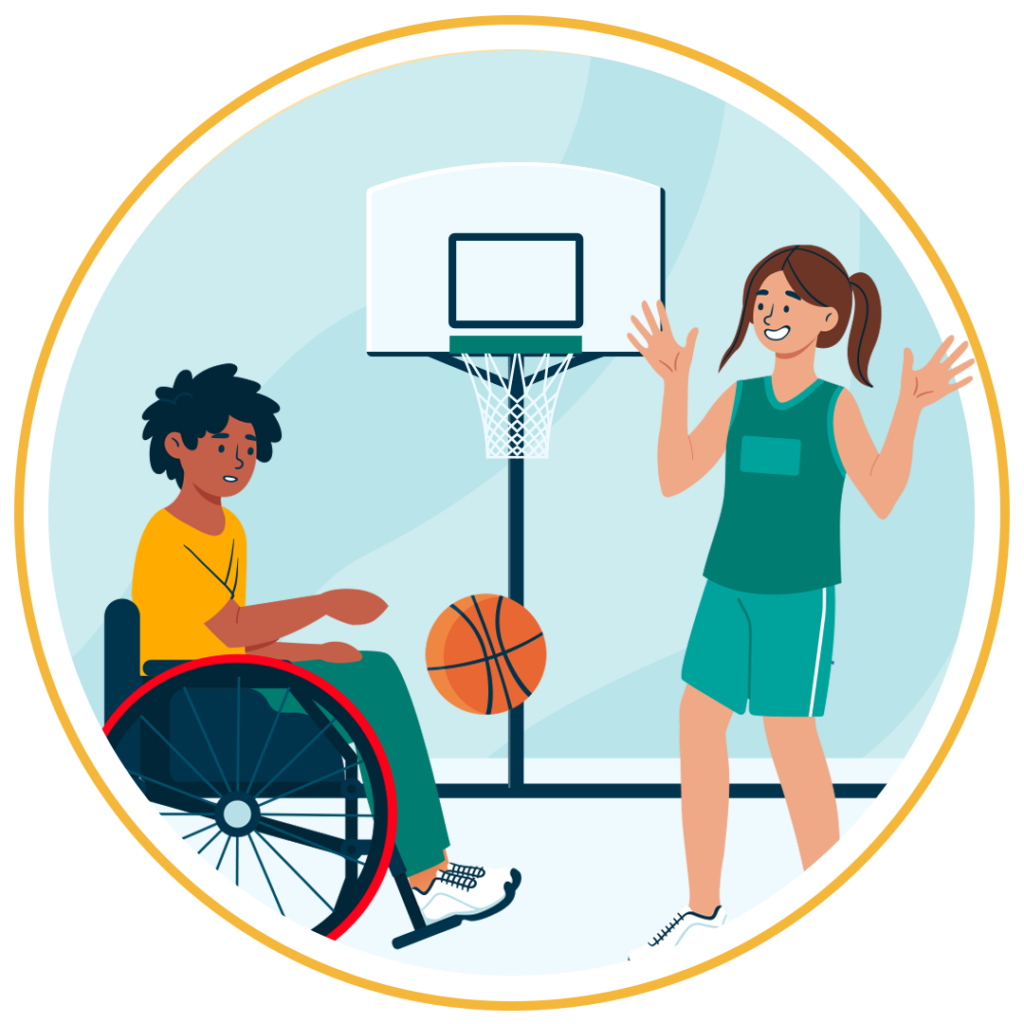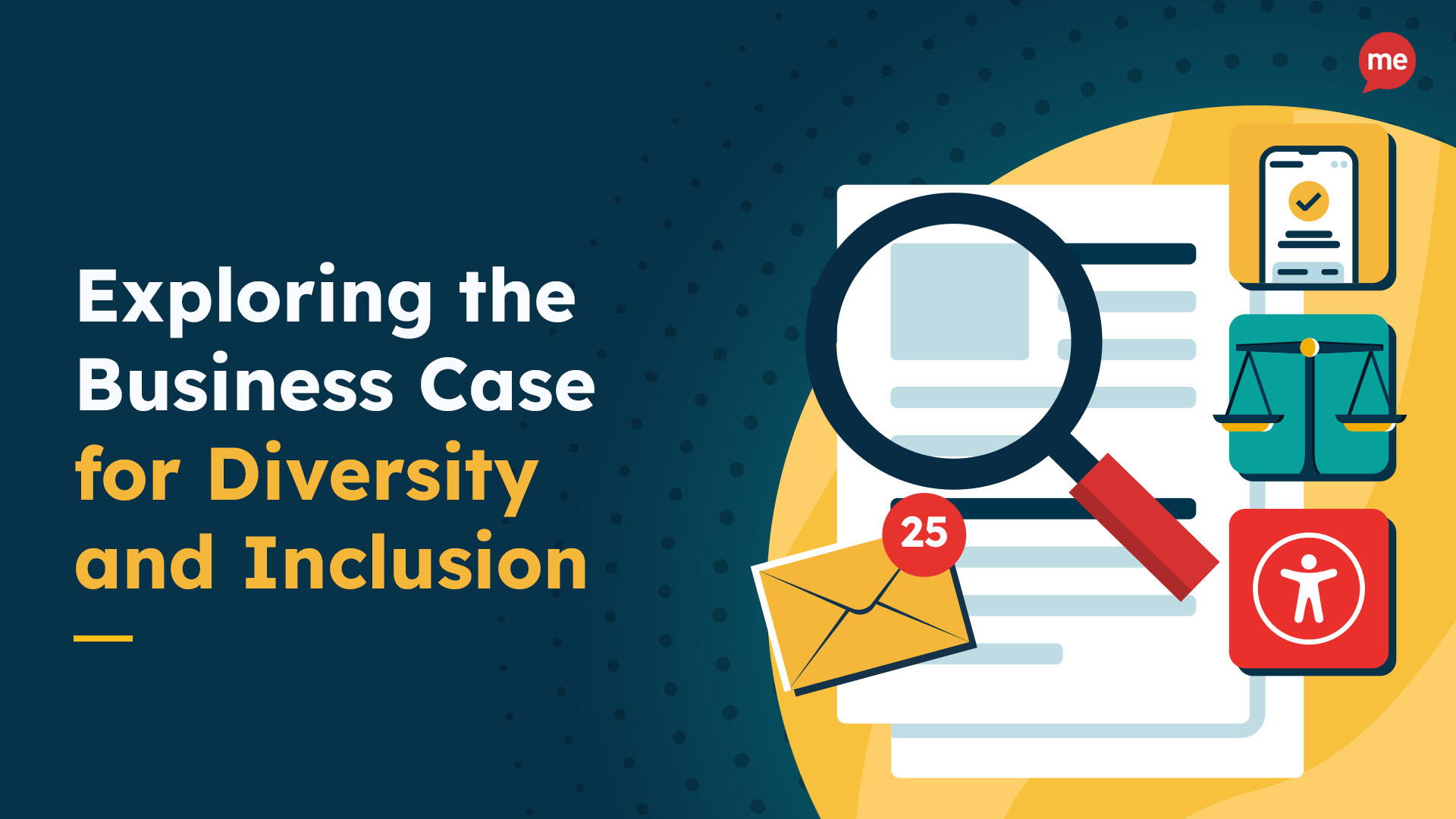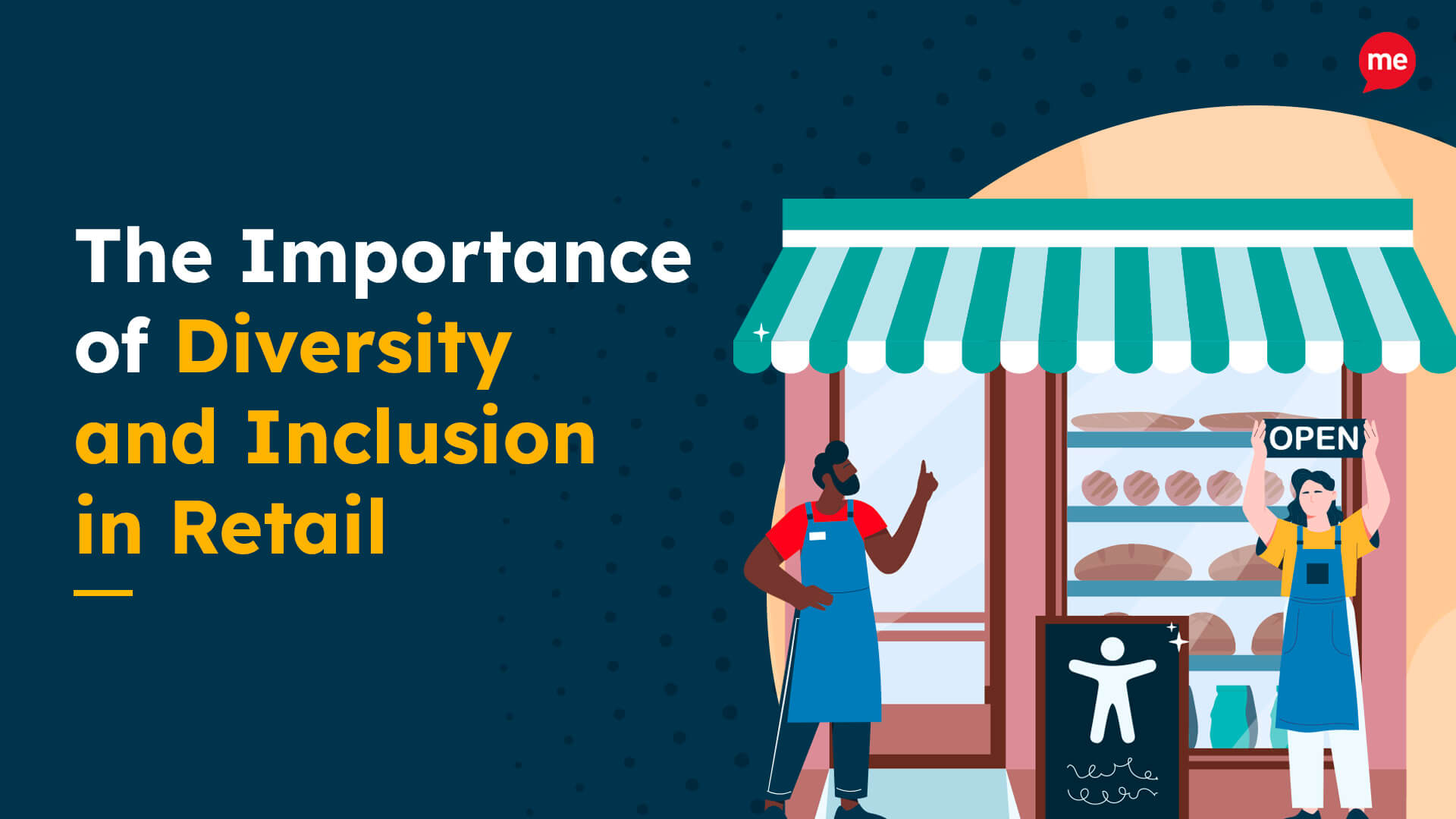Get Your Free Accessibility & Inclusion Toolkit
Download NowThe power of sport lies in its ability to unite people across various backgrounds, fostering a sense of community, shared purpose, and pride. However, recognising and embracing diversity isn’t simply an ethical choice. It’s a strategic imperative that directly impacts an organisation’s success, relevance, and ability to thrive in an increasingly interconnected and diverse global landscape.
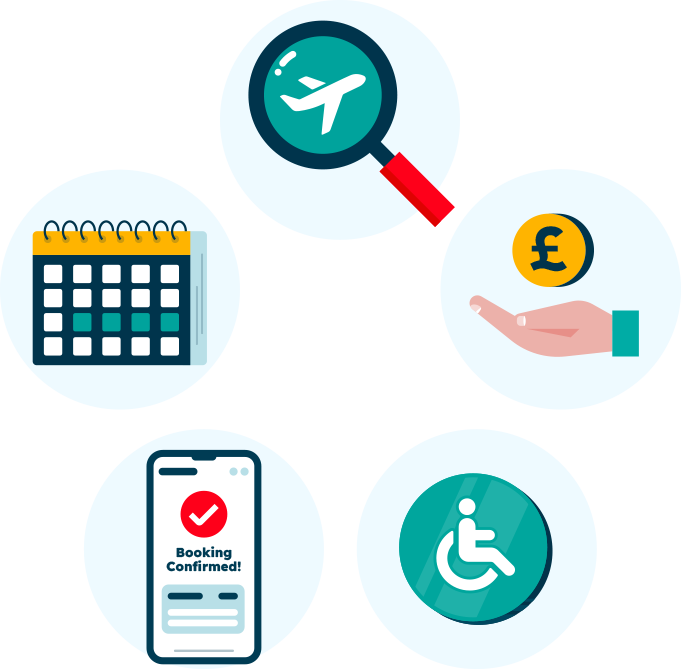
What is Diversity in Sport?
Diversity in sports encompasses a broad spectrum of characteristics, including race, ethnicity, gender, age, sexual orientation, and abilities. However, the goal isn’t merely to achieve token representation but to cultivate an environment that truly celebrates and leverages the richness of human differences.
There are several initiatives that promote diversity in sport, from grassroots programs that empower marginalised communities to elite-level strategies promoting diversity in coaching, administrative, and leadership roles. A few examples include:
Such efforts extend beyond the field, court, track, ring, and pitch, etc, aiming to reshape the very fabric of sporting organisations, governance, and culture. The focus is on creating pathways for talent development, eliminating underrepresentation, and fostering a genuine sense of belonging to create a more inclusive and equitable playing field for everyone.
What is Inclusion in Sport?
Inclusion in sports goes beyond representation. It involves creating an environment where everyone feels welcome, respected, and valued, and where diverse voices are not just present, but heard. Working towards inclusion involves reevaluating policies, procedures, and attitudes to ensure sports venues and organisations are welcoming and supportive of diversity.
Achieving inclusion requires a multifaceted approach. However, there is a particular emphasis on creating accessible and welcoming spaces for individuals with disabilities in sports – for example, by ensuring adaptive equipment and facilities are available. Examples of organisations at the forefront of championing inclusion include:
Download our Sports Accessibility Guide
Read more on why website accessibility is important to sports businesses, who needs support online, the type of access barriers users face, our top tips for an inclusive sporting website.
The Benefits of Diversity and Inclusion in Sport
Exercise has been proven to increase confidence and reduce feelings of depression, anxiety, stress, and loneliness. So, allowing everyone to participate in sports is a leap forward for the health of our society as a whole. However, being inclusive isn’t just the right thing to do. There are some significant organisational benefits, too:
- Improved creativity and innovation – Diverse teams bring together individuals with unique perspectives, experiences, and problem-solving approaches. In sports, diverse coaching staff, management, and players can lead to innovative strategies, game plans, and training methods that set a team apart from competitors.
- More business opportunities – By resonating with a broader audience, organisations can attract diverse sponsors, secure international partnerships, and tap into new revenue streams.
- Increased community engagement – When organisations cater to a broad spectrum of demographics, they engage the entire community, making it easier to build a loyal fan base and cement a reputation as a trustworthy community partner.
- Elevated brand value – Modern companies increasingly align their brands with businesses that promote diversity and inclusion. Sports organisations embracing these values are more likely to attract corporate sponsorships and create partnerships that go beyond traditional business ventures.
How Can Diversity and Inclusion Be Promoted in Sports?
Promoting diversity and inclusion best practices in the sports sector requires a holistic approach that addresses organisational culture, policies, and community engagement.
- Inclusive Policies and Frameworks – All organisations should develop and implement inclusive policies that address hiring practices, athlete recruitment, and community engagement. Established Equity, Diversity and Inclusion (EDI) frameworks provide guidance on creating and sustaining an inclusive sports culture.
- Diverse leadership and decision-making – Diverse leadership ensures that various perspectives are considered in strategic planning and organisational development. Therefore, sports businesses must be purposeful in actively seeking diverse representation among coaching staff, management, and board positions.
- Educational programs and training – Educational initiatives address unconscious biases and cultural sensitivity, and provide tools to create an inclusive environment both on and off the field. Attending training programs raises awareness among athletes, coaches, and staff alike.
- Mentorship and networking programs – Establishing mentorship programs encourages talent development from underrepresented groups and connects individuals from diverse backgrounds, fostering collaboration and community building.
- Accessible facilities – The provision of accessible facilities sends a powerful message about inclusivity. Every business should conduct thorough accessibility assessments and address obstacles that hinder participation by installing ramps, elevators, accessible seating, inclusive changing rooms, etc.
- Outreach programs – In communities with limited access to facilities and resources, outreach programs provide the equipment, coaching, and infrastructure needed for individuals who may not otherwise participate to experience the physical, social, and psychological benefits of sport.
- Inclusive marketing – Best practices include ensuring that websites, apps and other online platforms are accessible, displaying an accessibility statement on your website, and investing in assistive technology so individuals with disabilities can make the customisations they need to consume information according to their preferences.
Government Regulations Around Diversity and Inclusion in Sports
Governments play a pivotal role in shaping policies to promote diversity and inclusion in sports and reduce disability barriers. Australian Sports Commission (ASC) guidelines state that “All Australians should be able to participate in sport in a welcoming and inclusive way – regardless of age, ability, socio-economic status, cultural background, ethnicity, gender or sexual orientation.” There are two key pieces of legislation that underpin the ASC guidelines.
The Australian Human Rights Commission Act 1986 (AHRC Act)
The AHRC Act established the Australian Human Rights Commission (AHRC). The commission promotes and protects all human rights in Australia, including considerations regarding equitable access and inclusion for individuals with disabilities. The AHRC has the power to investigate discrimination complaints, make interventions, and take appropriate action to resolve issues.

Disability Discrimination Act 1992
The Disability Discrimination Act mandates that sports facilities be accessible to individuals with disabilities, including accessible seating, amenities, and pathways. The Act extends to digital accessibility in Australia, requiring sports organisations to provide online content in formats accessible to individuals with disabilities in alignment with WCAG standards. If a website is inaccessible in a way that contravenes the DDA, the owner may face financial penalties and/or legal action by the AHRC or individuals affected by the accessibility issues.
Our 40-page Digital Accessibility & Inclusion Toolkit helps businesses break down online barriers and make a real impact. It offers practical advice on all aspects of digital accessibility, from writing an accessibility statement to accessible website tips and inclusive hiring.
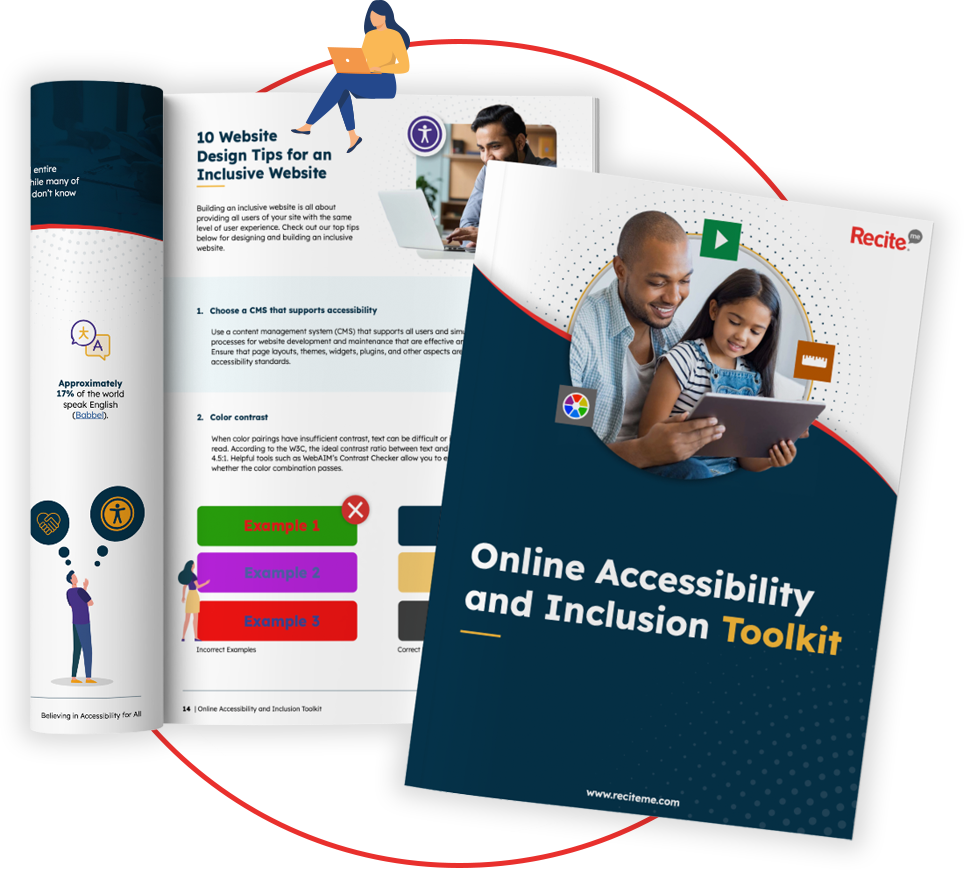
How Can Recite Me Help Create More Inclusive Sporting Experiences?
Recite Me’s innovative suite of accessibility on-demand tools makes websites accessible and inclusive for a diverse range of people.

WCAG-Compliance Made Easy
The Recite Me Accessibility Checker audits back-end and front-end web development processes by running 396 separate compliance scans in line with WCAG 2.1 and breaks down the issues you should be working to fix. The methodology follows a simple four-step process to help you increase your accessibility score:
- Step 1: Scan Your Domains – Choose between scanning single or multiple pages.
- Step 2: Identify Accessibility Issues – Identify the locations of accessibility issues on your website.
- Step 3: Fix Accessibility Errors – Boost your accessibility score by prioritising fixes in line with WCAG Levels A, AA, and AAA.
- Step 4: Track Your Progress – Create and share custom reports with your team and roadmap the next WCAG issues in your fix queue.
Schedule a free demonstration or run a free scan of your website today!
Accounting for Individual Differences
Unfortunately, your website doesn’t become instantly inclusive just because you made it accessible. What makes a website truly inclusive is providing options so individual users can make customisations to view web pages in the best way for them.
The Recite Me Toolbar is a proven way of supporting people online. Once installed, website visitors can create fully customisable online experiences by:
- Personalising font size, type, and colour options.
- Choosing the exact colour contrast between the text and background.
- Utilising the mask screen tool to help with focus.
- Using the ruler tool to make reading easier.
- Downloading content as an audio file as an alternative to reading.
- Converting page content into over 100 on-screen languages.
- Having the page read aloud in a choice of 65 languages.
- Customising PDF documents or having them read aloud/ translated.
- Zooming in on any part of a webpage.
- Using the built-in spell-checker and a fully integrated dictionary and thesaurus.
Schedule a free demonstration, or take our toolbar for a test drive right now!
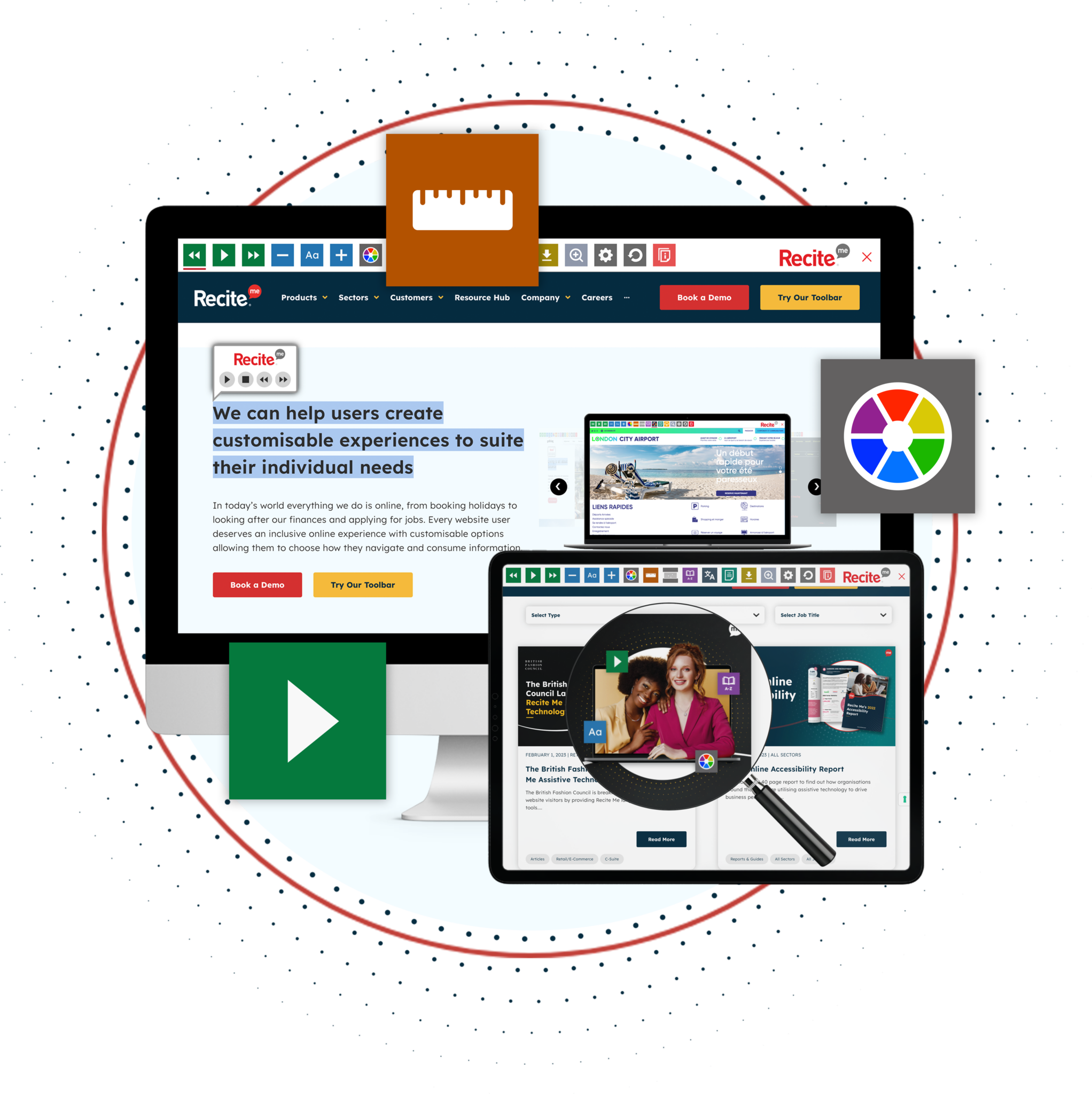
Learn More
Recite Me software can be installed on any HTML-based website creation platform, including WordPress, Wix, Squarespace, Shopify, and many more. Implementing the toolbar typically takes less than an hour, and you can start to track your stats and insights right away.
Contact our team today to learn more and join the thousands of websites already using Recite Me technology to provide more equitable online experiences. Together, we can all help create an accessible digital world where everyone feels included.
